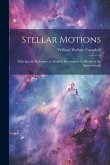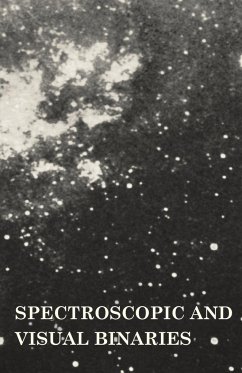Antoine Duquennoy / Michel Mayor (eds.)
Binaries as Tracers of Stellar Formation
Herausgeber: Duquennoy, Antoine; Antoine, Duquennoy; Mayor, Michel
Antoine Duquennoy / Michel Mayor (eds.)
Binaries as Tracers of Stellar Formation
Herausgeber: Duquennoy, Antoine; Antoine, Duquennoy; Mayor, Michel
- Broschiertes Buch
Andere Kunden interessierten sich auch für
![An Introduction to Optical Stellar Interferometry An Introduction to Optical Stellar Interferometry]() A. LabeyrieAn Introduction to Optical Stellar Interferometry57,99 €
A. LabeyrieAn Introduction to Optical Stellar Interferometry57,99 €![Problems of Cosmology and Stellar Dynamics Problems of Cosmology and Stellar Dynamics]() James JeansProblems of Cosmology and Stellar Dynamics36,99 €
James JeansProblems of Cosmology and Stellar Dynamics36,99 €![Formation of Structure in the Universe Formation of Structure in the Universe]() Avishai Dekel / P. Ostriker (eds.)Formation of Structure in the Universe57,99 €
Avishai Dekel / P. Ostriker (eds.)Formation of Structure in the Universe57,99 €![Planet Formation Planet Formation]() Planet Formation54,99 €
Planet Formation54,99 €![Theory of the Stellar Universe and the Mixed Doctrine of Parallax and Abberration [microform] Theory of the Stellar Universe and the Mixed Doctrine of Parallax and Abberration [microform]]() John HarrisTheory of the Stellar Universe and the Mixed Doctrine of Parallax and Abberration [microform]18,99 €
John HarrisTheory of the Stellar Universe and the Mixed Doctrine of Parallax and Abberration [microform]18,99 €![Stellar Motions: With Special Reference to Motions Determined by Means of the Spectrograph Stellar Motions: With Special Reference to Motions Determined by Means of the Spectrograph]() William Wallace CampbellStellar Motions: With Special Reference to Motions Determined by Means of the Spectrograph25,99 €
William Wallace CampbellStellar Motions: With Special Reference to Motions Determined by Means of the Spectrograph25,99 €![Spectroscopic and Visual Binaries Spectroscopic and Visual Binaries]() Frank SchlesingerSpectroscopic and Visual Binaries12,99 €
Frank SchlesingerSpectroscopic and Visual Binaries12,99 €-
-
-
Produktdetails
- Verlag: Cambridge University Press
- Seitenzahl: 304
- Erscheinungstermin: 25. Juni 2005
- Englisch
- Abmessung: 244mm x 170mm x 16mm
- Gewicht: 528g
- ISBN-13: 9780521019118
- ISBN-10: 0521019117
- Artikelnr.: 21775500
- Herstellerkennzeichnung
- Libri GmbH
- Europaallee 1
- 36244 Bad Hersfeld
- gpsr@libri.de
1. N-body simulations of primordial binaries and tidal capture in open clusters
2. When and how can binary data test similar models?
3. Statistical analysis of single-lined red giant spectroscopic binaries
4. The formation of binary stars
5. Distribution and evolution of orbital elements for 1 M primaries
6. Tidal circularization of short period binaries
7. Composite-spectrum binaries
8. Orbital elements for field late-type binaries
9. Evidences for interaction among wide binary systems: to Ba or not to Ba?
10. Spectroscopic binaries in the open cluster M67
11. Spectroscopic binaries in the halo
12. Eccentricity evolution of a binary embedded in a disk
13. The eccentricity distribution of pre-main sequence binaries
14. A new algorithm to derive the mass-ratio distribution of spectroscopic binaries in open clusters
15. Are barium dwarfs progenitors of barium giants
16. RZ Eridani as a constraint on synchronization and circularization times
17. Ekman layers and tidal synchronization of binary stars
18. The distribution of mass ration in late-type main-sequence binary systems
19. The dynamical evolution of G-type main sequence binaries
20. Present state of the tidal theory
21. Infrared companions: clues to binary star formation
22. The distribution of cutoff periods with age: an observational constraint on tidal circularization theory.
2. When and how can binary data test similar models?
3. Statistical analysis of single-lined red giant spectroscopic binaries
4. The formation of binary stars
5. Distribution and evolution of orbital elements for 1 M primaries
6. Tidal circularization of short period binaries
7. Composite-spectrum binaries
8. Orbital elements for field late-type binaries
9. Evidences for interaction among wide binary systems: to Ba or not to Ba?
10. Spectroscopic binaries in the open cluster M67
11. Spectroscopic binaries in the halo
12. Eccentricity evolution of a binary embedded in a disk
13. The eccentricity distribution of pre-main sequence binaries
14. A new algorithm to derive the mass-ratio distribution of spectroscopic binaries in open clusters
15. Are barium dwarfs progenitors of barium giants
16. RZ Eridani as a constraint on synchronization and circularization times
17. Ekman layers and tidal synchronization of binary stars
18. The distribution of mass ration in late-type main-sequence binary systems
19. The dynamical evolution of G-type main sequence binaries
20. Present state of the tidal theory
21. Infrared companions: clues to binary star formation
22. The distribution of cutoff periods with age: an observational constraint on tidal circularization theory.
1. N-body simulations of primordial binaries and tidal capture in open clusters
2. When and how can binary data test similar models?
3. Statistical analysis of single-lined red giant spectroscopic binaries
4. The formation of binary stars
5. Distribution and evolution of orbital elements for 1 M primaries
6. Tidal circularization of short period binaries
7. Composite-spectrum binaries
8. Orbital elements for field late-type binaries
9. Evidences for interaction among wide binary systems: to Ba or not to Ba?
10. Spectroscopic binaries in the open cluster M67
11. Spectroscopic binaries in the halo
12. Eccentricity evolution of a binary embedded in a disk
13. The eccentricity distribution of pre-main sequence binaries
14. A new algorithm to derive the mass-ratio distribution of spectroscopic binaries in open clusters
15. Are barium dwarfs progenitors of barium giants
16. RZ Eridani as a constraint on synchronization and circularization times
17. Ekman layers and tidal synchronization of binary stars
18. The distribution of mass ration in late-type main-sequence binary systems
19. The dynamical evolution of G-type main sequence binaries
20. Present state of the tidal theory
21. Infrared companions: clues to binary star formation
22. The distribution of cutoff periods with age: an observational constraint on tidal circularization theory.
2. When and how can binary data test similar models?
3. Statistical analysis of single-lined red giant spectroscopic binaries
4. The formation of binary stars
5. Distribution and evolution of orbital elements for 1 M primaries
6. Tidal circularization of short period binaries
7. Composite-spectrum binaries
8. Orbital elements for field late-type binaries
9. Evidences for interaction among wide binary systems: to Ba or not to Ba?
10. Spectroscopic binaries in the open cluster M67
11. Spectroscopic binaries in the halo
12. Eccentricity evolution of a binary embedded in a disk
13. The eccentricity distribution of pre-main sequence binaries
14. A new algorithm to derive the mass-ratio distribution of spectroscopic binaries in open clusters
15. Are barium dwarfs progenitors of barium giants
16. RZ Eridani as a constraint on synchronization and circularization times
17. Ekman layers and tidal synchronization of binary stars
18. The distribution of mass ration in late-type main-sequence binary systems
19. The dynamical evolution of G-type main sequence binaries
20. Present state of the tidal theory
21. Infrared companions: clues to binary star formation
22. The distribution of cutoff periods with age: an observational constraint on tidal circularization theory.

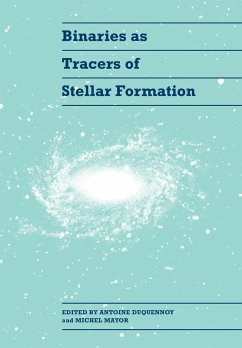

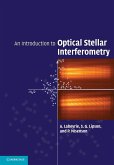
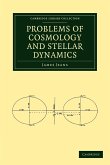
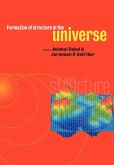
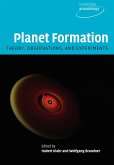
![Theory of the Stellar Universe and the Mixed Doctrine of Parallax and Abberration [microform] Theory of the Stellar Universe and the Mixed Doctrine of Parallax and Abberration [microform]](https://bilder.buecher.de/produkte/66/66166/66166367m.jpg)
